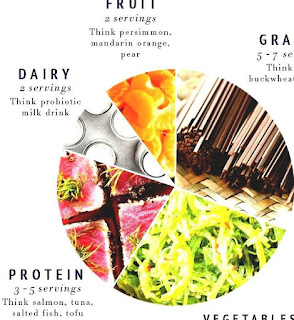The Okinawa diet describes the eating habits of the indigenous people of the Ryukyu Islands (belonging to Japan), which is believed to cause their exceptional longevity. It is also the name of a weight-loss diet based on this.
Indigenous islanders' diet
Okinawan Longevity and Health - A documentary about the health and longevity of Okinawa - and a warning of the health dangers posed by modern 'American lifestyles'. VISIT: http://www.okinawanway.blogspot.com for information...
People from the Ryukyu Islands (of which Okinawa is the largest) have a life expectancy among the highest in the world, although the male life expectancy rank among Japanese prefectures has plummeted in recent years.
The traditional diet of the islanders contains 30% green and yellow vegetables. Although the traditional Japanese diet usually includes large quantities of rice, the traditional Okinawa diet consists of smaller quantities of rice; instead the staple is the purple-fleshed Okinawan sweet potato. The Okinawan diet has only 30% of the sugar and 15% of the grains of the average Japanese dietary intake.
The traditional diet also includes a tiny amount of fish (less than half a serving per day) and more in the way of soy and other legumes (6% of total caloric intake). Pork is highly valued, yet eaten very rarely. Every part of the pig is eaten, including internal organs.
Between a sample from Okinawa where life expectancies at birth and 65 were the longest in Japan, and a sample from Akita Prefecture where the life expectancies were much shorter, intakes of calcium, iron and vitamins A, B1, B2, and C, and the proportion of energy from proteins and fats were significantly higher in Okinawa than in Akita. Conversely, intakes of carbohydrates and salt were lower in Okinawa than in Akita.
The quantity of pork consumption per person a year in Okinawa is larger than that of the Japanese national average. For example, the quantity of pork consumption per person a year in Okinawa in 1979 was 7.9Â kg (17Â lb) which exceeded by about 50% that of the Japanese national average. The pig's feet, ears, and stomach are considered healthy everyday foodstuffs. Pork is an integral part of Okinawan longevity food.
The dietary intake of Okinawans compared to other Japanese circa 1950 shows that Okinawans consumed: fewer total calories (1785 vs. 2068), less polyunsaturated fat (4.8% of calories vs. 8%), less rice (154g vs. 328g), significantly less wheat, barley and other grains (38g vs. 153g), less sugars (3g vs. 8g), more legumes (71g vs. 55g), significantly less fish (15g vs. 62g), significantly less meat and poultry (3g vs. 11g), less eggs (1g vs. 7g), less dairy (<1g vs. 8g), much more sweet potatoes (849g vs. 66g), less other potatoes (2g vs. 47g), less fruit (<1g vs. 44g), and no pickled vegetables (0g vs. 42g). In short, the Okinawans circa 1950 ate sweet potatoes for 849 grams of the 1262 grams of food that they consumed, which constituted 69% of their total calories.
An Okinawan reaching 100 years of age has typically had a diet consistently averaging about one calorie per gram of food and has a BMI of 20.4 in early adulthood and middle age.
In addition to their high life expectancy, islanders are noted for their low mortality from cardiovascular disease and certain types of cancers. Wilcox (2007) compared age-adjusted mortality of Okinawans versus Americans and found that, during 1995, an average Okinawan was 8 times less likely to die from coronary heart disease, 7 times less likely to die from prostate cancer, 6.5 times less likely to die from breast cancer, and 2.5 times less likely to die from colon cancer than an average American of the same age.
The traditional Okinawan diet as described above was widely practiced on the islands until about the 1960s. Since then, dietary practices have been shifting towards Western and Japanese patterns, with fat intake rising from about 6% to 27% of total caloric intake and the sweet potato being supplanted with rice and bread. This shifting trend has also coincided with a decrease in longevity, where Okinawans now have a lower life expectancy than the Japanese average.
Weight loss diet
The diet consists of a relatively high energy intake, and contains similar foods to the traditional Okinawan diet. The principal focus of the diet consists of knowing the food energy density of each food item.
The proponents of this diet divide food into four categories based on caloric density. The "featherweight" foods, less than or equal to 0.8 calories per gram (3.3Â kJ/g) which one can eat freely without major concern, the "lightweight" foods with a caloric density from 0.8 to 1.5 calories per gram which one should eat in moderation, the "middleweight" foods with a caloric density from 1.5 to 3.0 calories per gram which one should eat only while carefully monitoring portion size and the "heavyweight" foods from 3 to 9 calories per gram which one should eat only sparingly.
See also
- Longevity in Okinawa
- Calorie restriction
- Hara hachi bu
- Okinawan cuisine

